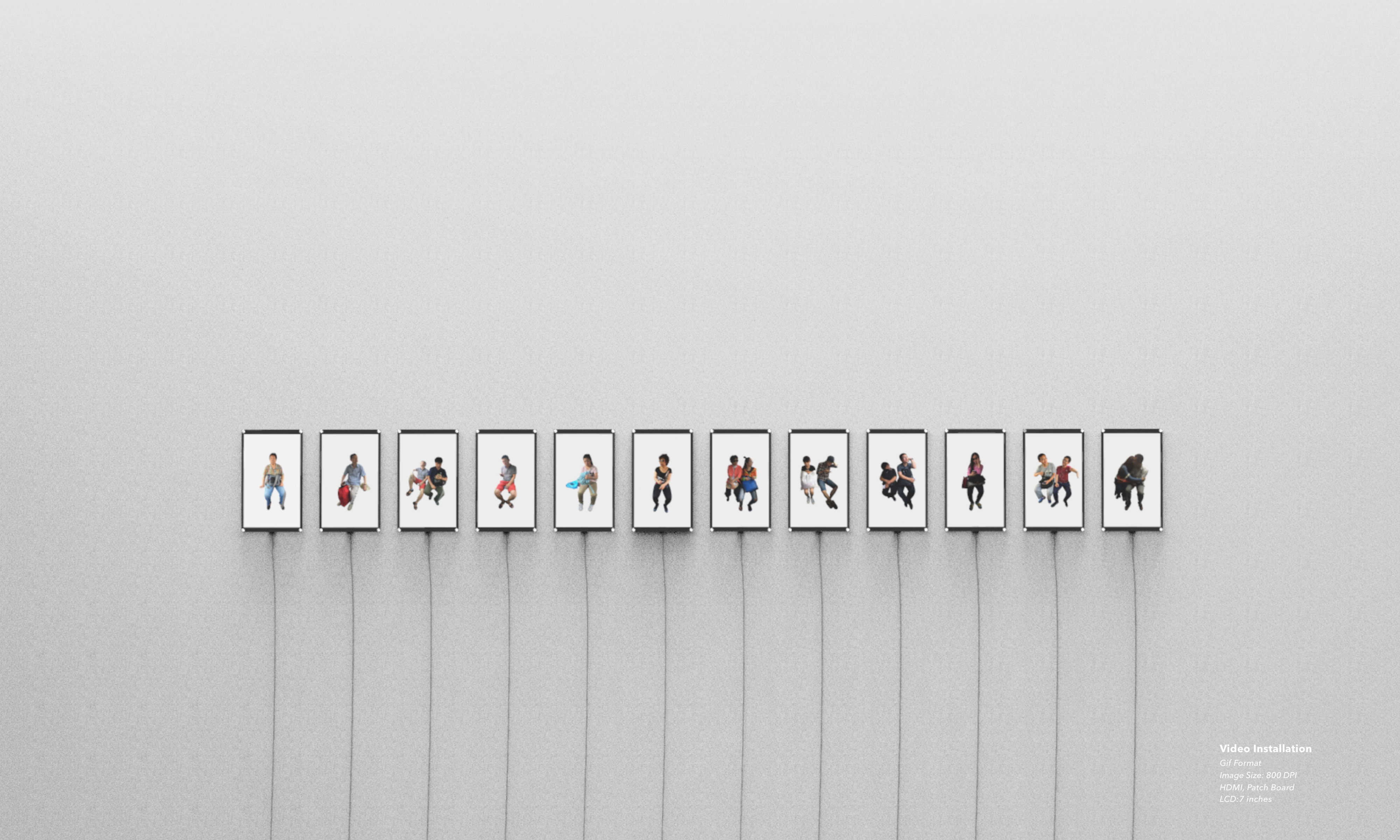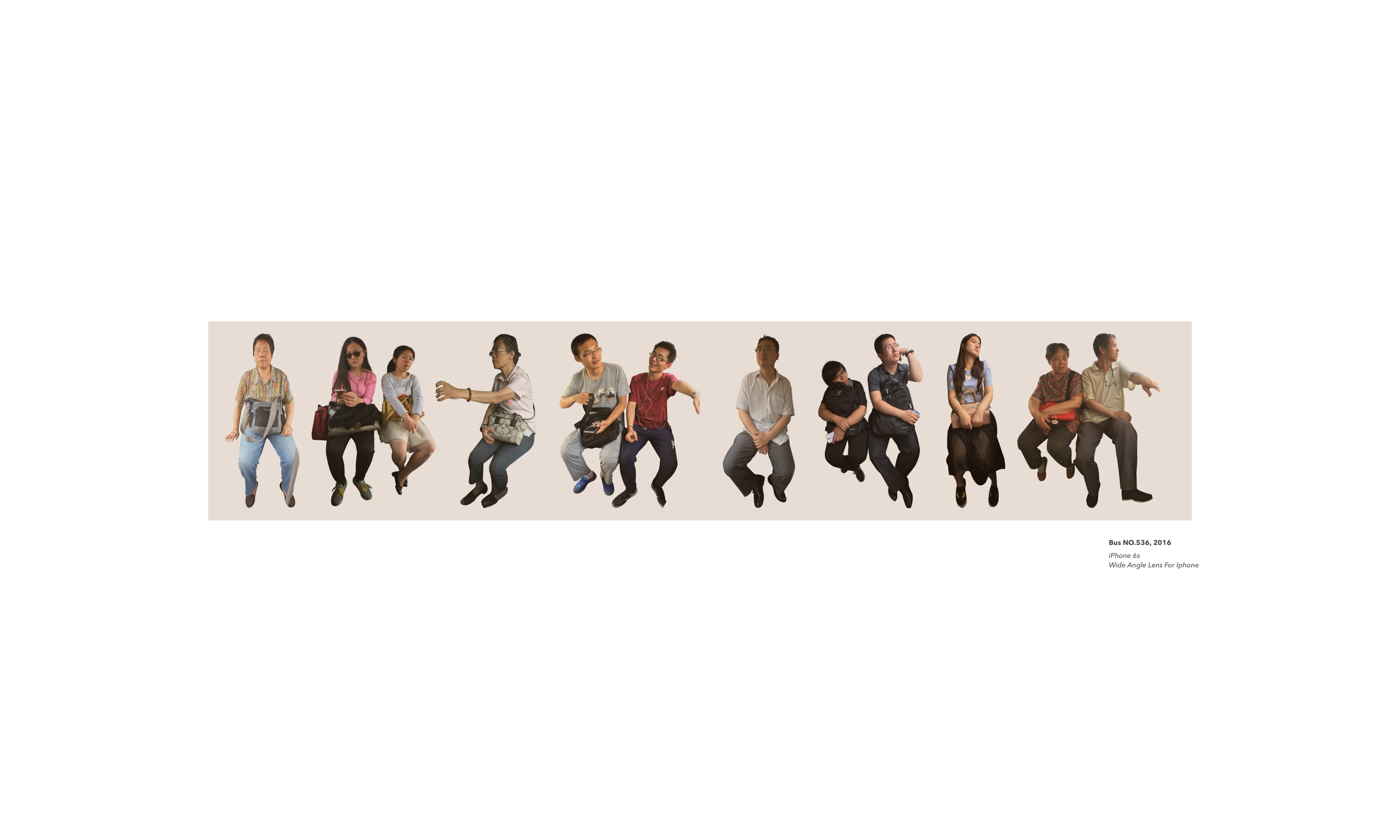FLOW / installation
Plastic tube / Silver chain / Hooks/Springs / Rubber strap / ’U ‘ shape metal pipe
The stronger the wind, the more dramatic a flow will come through.
“Flow” is a kinetic sound sculpture that shows dynamic movements triggered by the natural wind. I consider the living surroundings with a metaphorical frame. The work represents the precarious circumstances mirroring the pandemic period of 2020. When the wind rises up, the uncanny hanging sculpture begins chiming random sounds. The uncontrollable power from wind creates different shapes and traces by crossing objects in a home-studio space, re-creating a fictional landscape echoing the visible world. I seek to convey the feeling of being swept away by dramatic changes, emphasizing the unpredictability of waiting. The hanging structure evokes the feeling of being “suspended,” describing both my inner perspective and the outside world in its “uncertainty”.
《相变》是一个混合媒介装置,将“筛”这个动态过程视作一场特殊的仪式。艺术家邀请观众成为作品的一部分,这种实时发生的结构旨在实现与声音、动作和身体相互融合关联的状态改变。
无论是审美的还是功能主义实用的,转瞬即逝的过程还是静态的物体,《相变》从作品的总体组成部分固有的破坏性规律趋势中引发了身份认同的问题: 它是一个声音作品,一个编曲组合,一个雕塑,还是所谓的装置?五个垂直的金属管构成的结构呈正方形排列,每个结构中都包含多层叠合的网状物,功能和外形类似于一个筛子,能容纳小堆的盐。在技术的激活下,这些空间中的金属“身体”也传递着一种物理和观念上的能量转换,筛子以一种微妙的动态,在电机的震动下轻轻地前后左右移动,将盐不规则地分散到地面上。‘盐’在历史中所具有的模糊象征性,比如货币,炼金术,以及抵御邪恶的仪式元素,传达了一种不断变化和混乱的状态,这种状态的生成在此作品中被接触式麦克风采集接受并强化,循环往复地在空间中扩展开
As I was Moving Ahead Occasionally I Thought About Eating
Camera/Assembled acrylic box/Mini speakers/Silicon Raw/ Metal/belongings from studio/Projector/LED lights/Plastic tube/Mini Fan
“As I was Moving Ahead Occasionally I Thought About Eating” is a large-scale “self-portrait” in the form of a media-based installation featuring an integrated system including an artificial body in a digital planting environment. Rather than literal representation, the work’s deconstruction and
reconstruction
echoes alchemical transmutation as it uses abstracted measurements to recreate in a gallery space the artist’s studio environment. At the center stands a cube-shaped totem
measured to my body, containing a camera that records images of the gallery space on a timed basis, merging observing and being observed in an infinite loop.
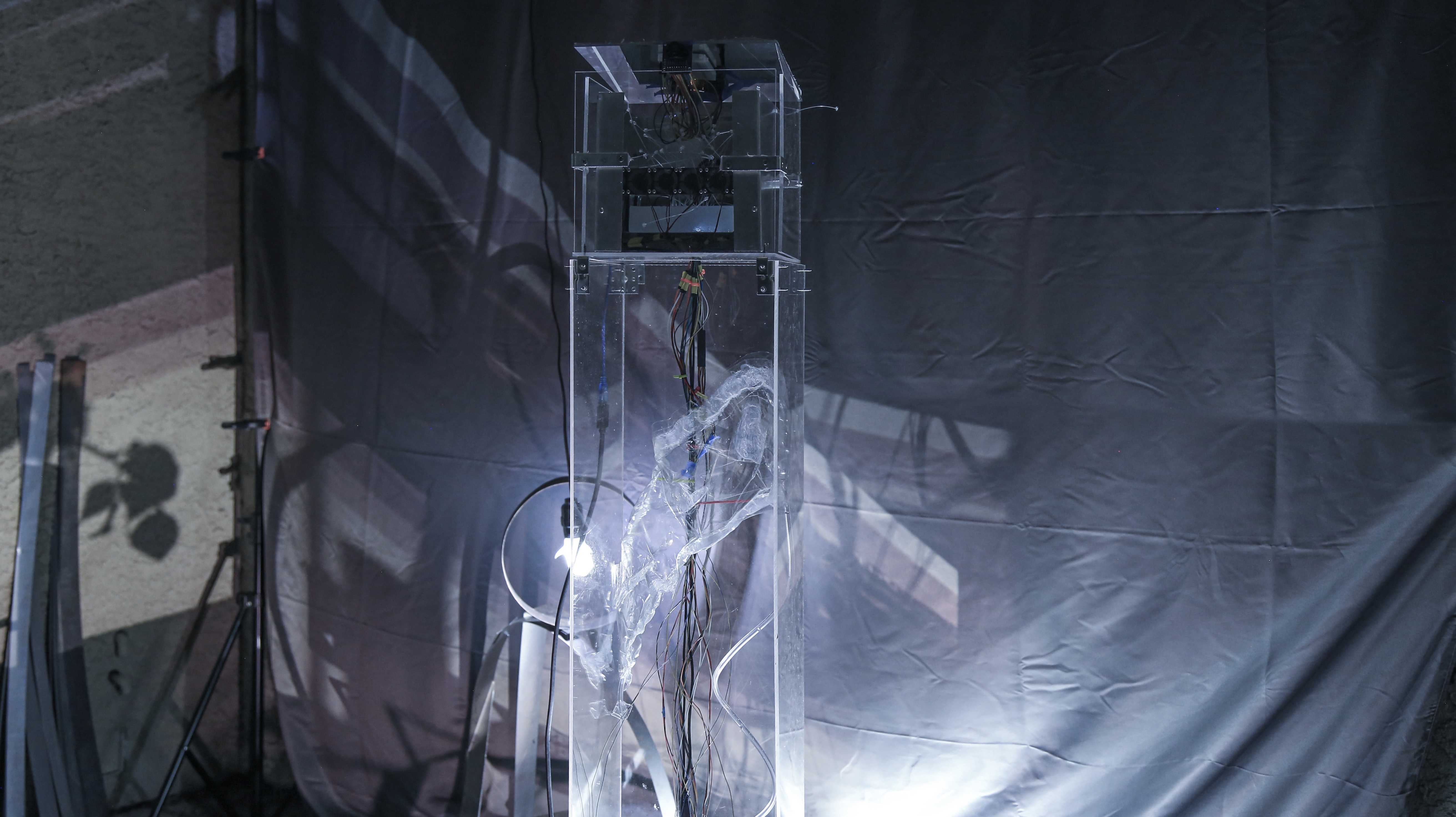
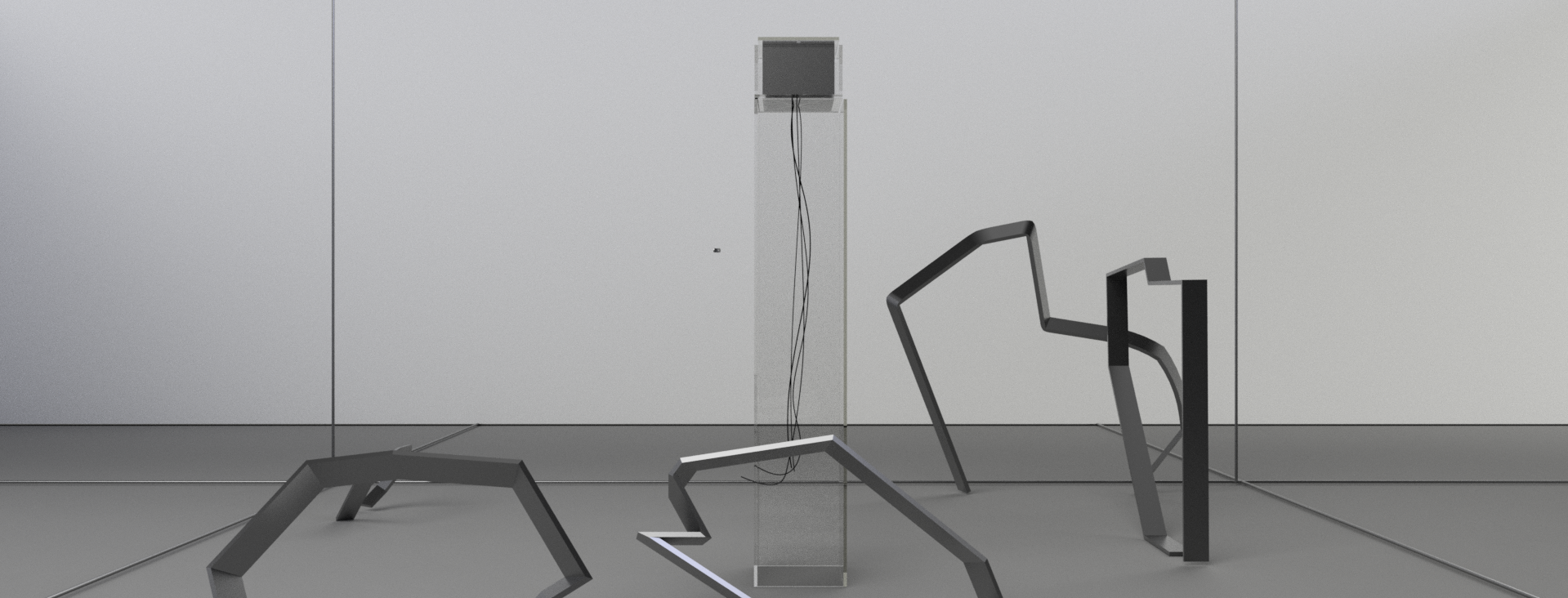
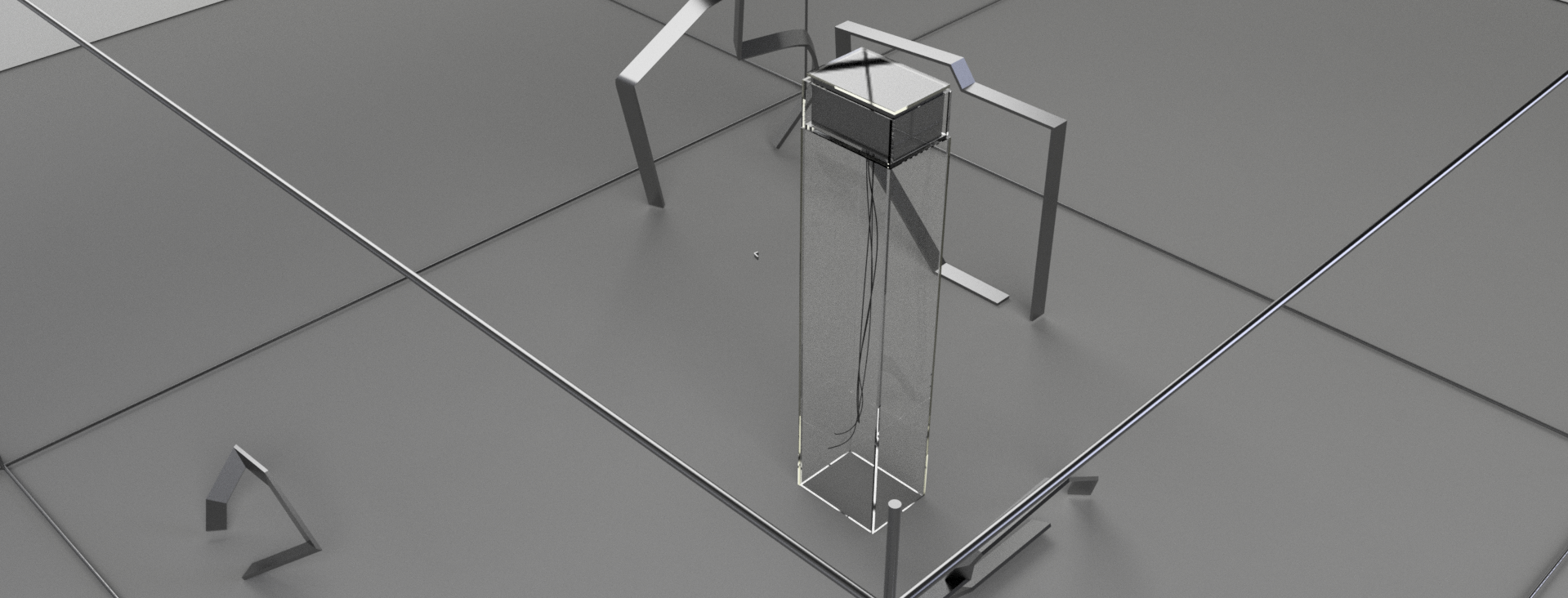

Dance Machine
Stepper Motor/Arduino UNO/Gears/LED lights/Fishing Line/Card boards/Laptop
Special thanks:Lillian Yang
Dance Machine is a kinetic sculpture that explores the
interactions between space and the body. This research-based project expands the extension of choreography as visual art, illustrating Yvonne Rainer’s saying: “To be moved by some, rather than by oneself.” I use a dynamic body structure through a network of points and lines to investigate the possibilities inside a frame, trying to blur the laws in space and laws of body movements. The motor reflects moving by automatic system-control. Meanwhile, the flexibility of the line causes each movement to display a subtle difference, which is further differentiated by the shifting perspectives of the audience who must choose their point of interpretation. The interposing lights and moving gestures animate a space, which highlights the experience of time, visible and invisible, mirroring the definition of Bauhaus artist Oskar Schlemmer, of light as an active force on a stage that connects with a tendency to present and not to represent.
《舞蹈机器》是以动态雕塑的形式探索空间和身体之间的相互作用。这个以研究为基础的项目扩展了舞蹈作为视觉艺术的延伸,灵感承袭了伊冯娜 · 雷纳(Yvonne Rainer)所说: “被他者移动,而非自己。”
艺术家利用动态的身体结构,通过点和线交织形成的网格来研究探索既定框架内所存在的可能性,试图模糊身体在空间中已知的运动规则与空间本身所形成的界限。电机通过自动控制系统触发运动,与此同时,线条的弹性使得每一个动态的联结和发生都表现出微妙的差异,这种差异又因观众观察角度的变化而进一步加以区分,观众必须选择自己的解读点进行理解和感受。光线的介入和移动的姿势使空间生动起来,突出了时间,可见与不可见,也反映了包豪斯艺术家奥斯卡 · 施莱默对光线的定义:光线是舞台表现的必要条件, 是表现舞台活跃和展示表演力量的重要元素,光所及之处,是突出和表现,而非再现。
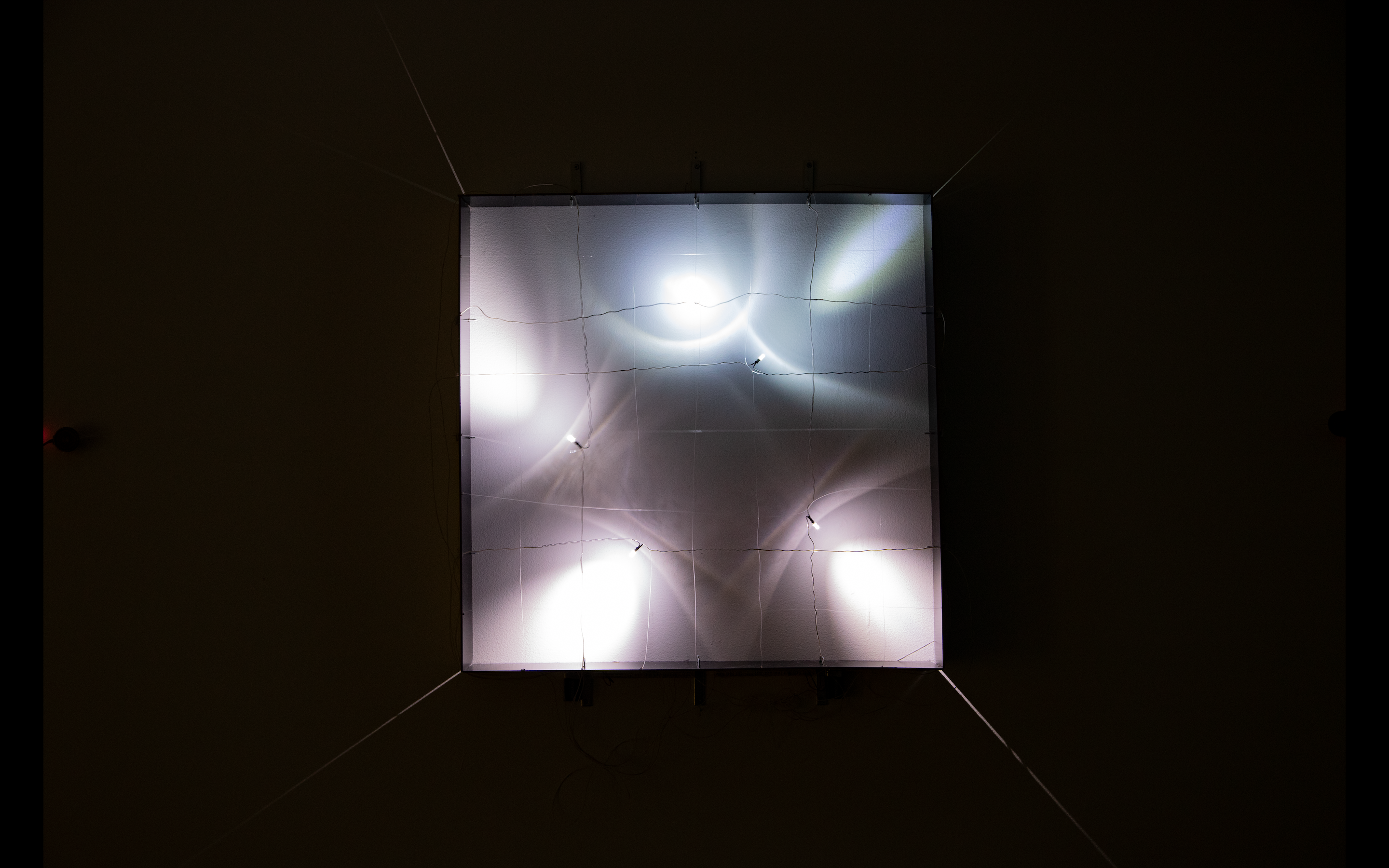



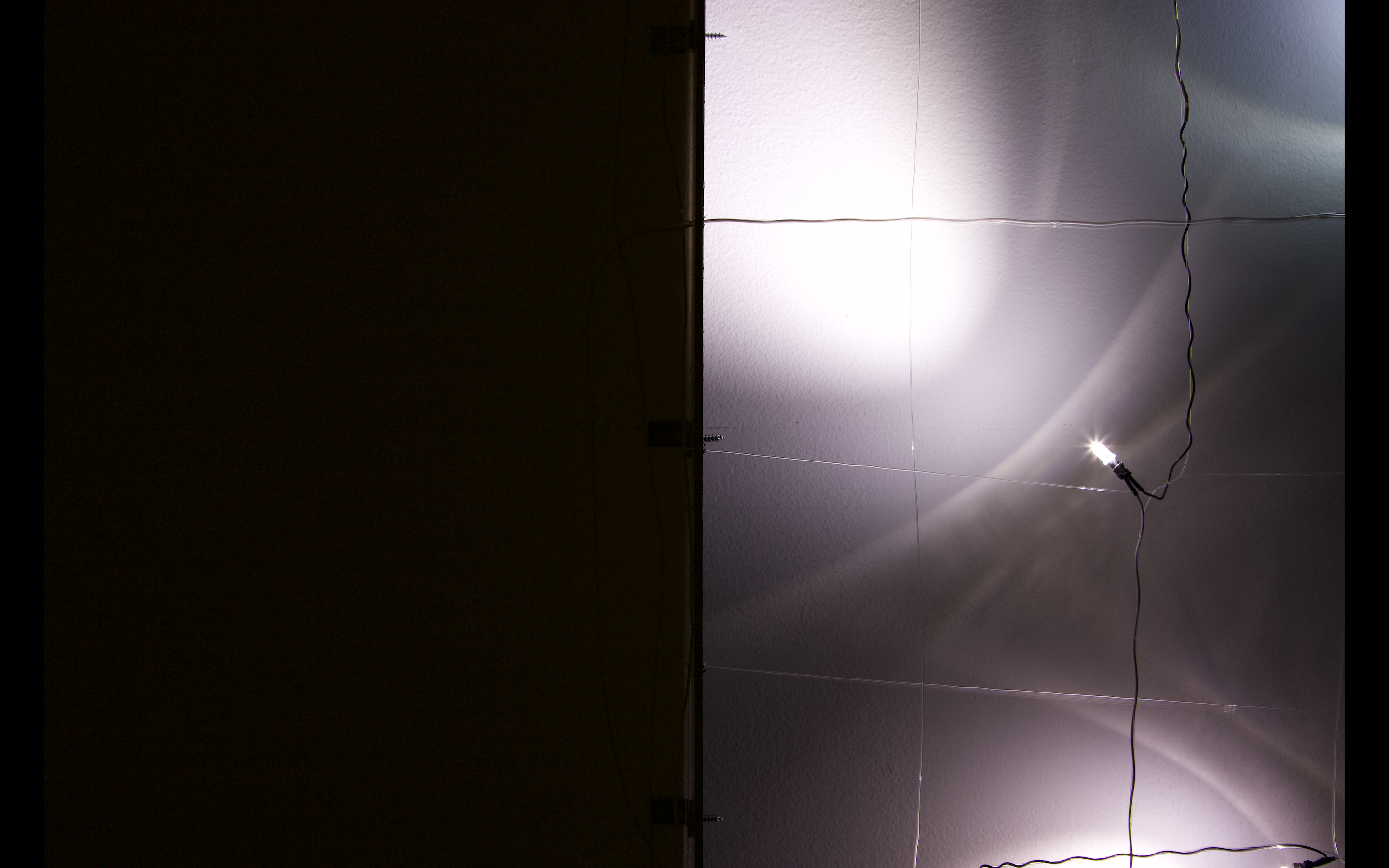
Phase Change
Salt/Pipes/Fishing line/Mesh/Push-Pull Solenoid/Contact Mic/8-Channel Mixer/Arduino Board
Phase change is a hybrid-media installation that shows the sifting procedure as a specific ritual. I invite the audience to be a part of the work, and this happening structure aims to achieve the phase changes associated with sound, movements, and body. Both aesthetic and utilitarian, temporal process and static object, Phase Change provokes questions of identity from amidst the disruptive disciplinary tendencies inherent in the aggregate components of the work: is it a sound work, a musical compositional device, a sculpture, or an installation? Five structures made of vertical metal pipes are arranged in square, each containing a layered netting device, similar to a sifter, holding small piles of salt. Activated by technology, these bodies in space also communicate a physical and conceptual power of transformation, for the sifter gently moves from side to side, dispersing the collected pile of salt to the ground. The symbolic ambiguity of salt, as currency, alchemy, and a ritual element to ward off evil, communicates a continual state of flux and chaos which is heightened by the ambient sounds picked up by contact microphones.


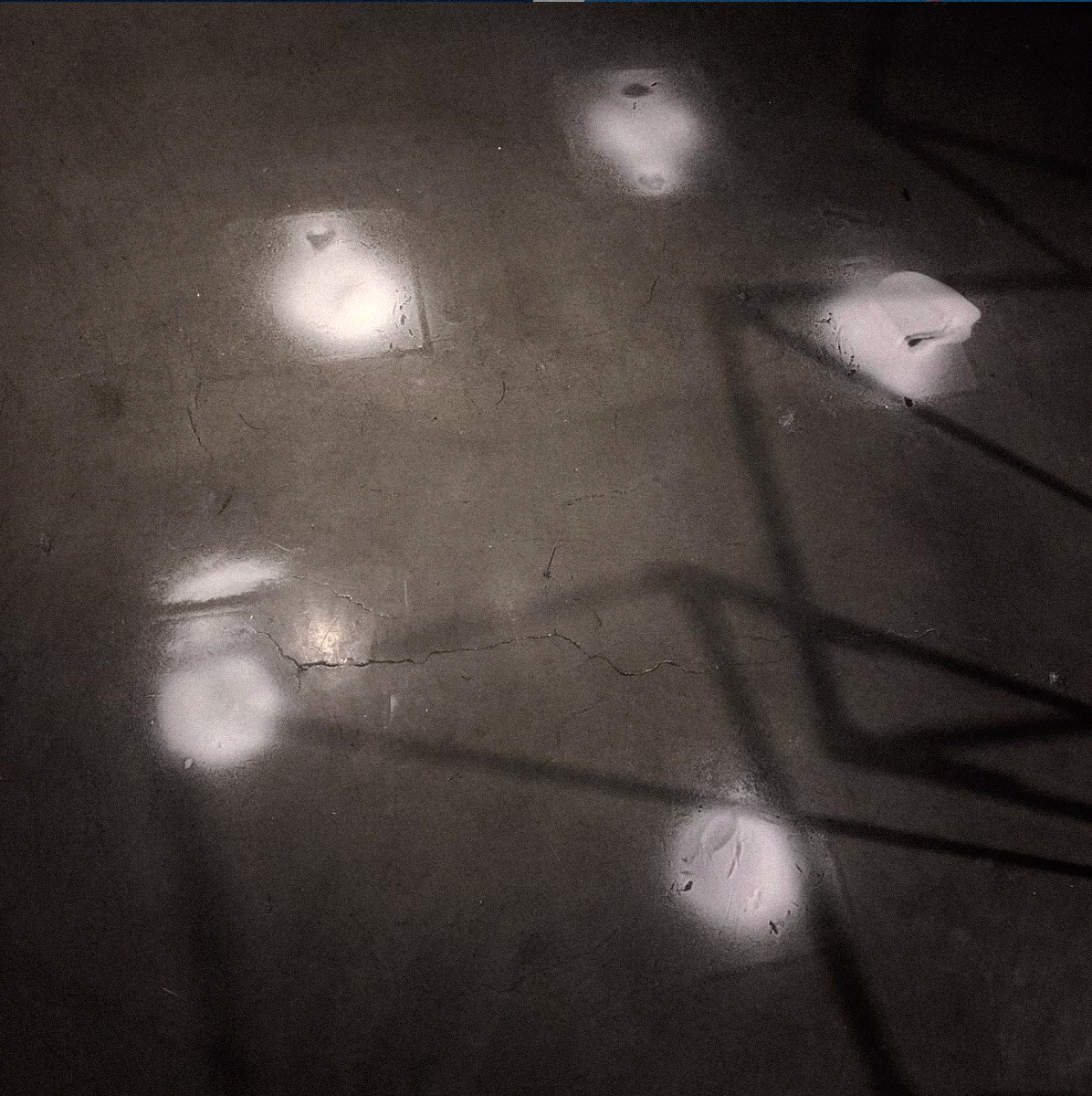

One Month
Optical Mouse Drawing/Water Color Paper, Carbon Paper/30cm*43cm
Is there a path to trace in life? I used tracing paper on a table to record a month in my life, with the randomness of the dots and lines condensing everything I experienced in a month. It appeared to me that this was a pure and primitive way to record my life, taking the physical intersection between me and every object and seriously engraving it down.


One Month 2020
Metal sheets/Plastice bags/Printed plastic paper
Time Is Irreversble
Time is irreversible, and the changes brought about by time are also irresistible. The inspiration behind this installation comes from being deeply moved by the passing of time. The movement of magnetic particles inserted into the acrylic board through the teeth of the gears creates a subtle change, with these minute particles moving under the influence of magnetic attraction, constantly released and then beginning again.
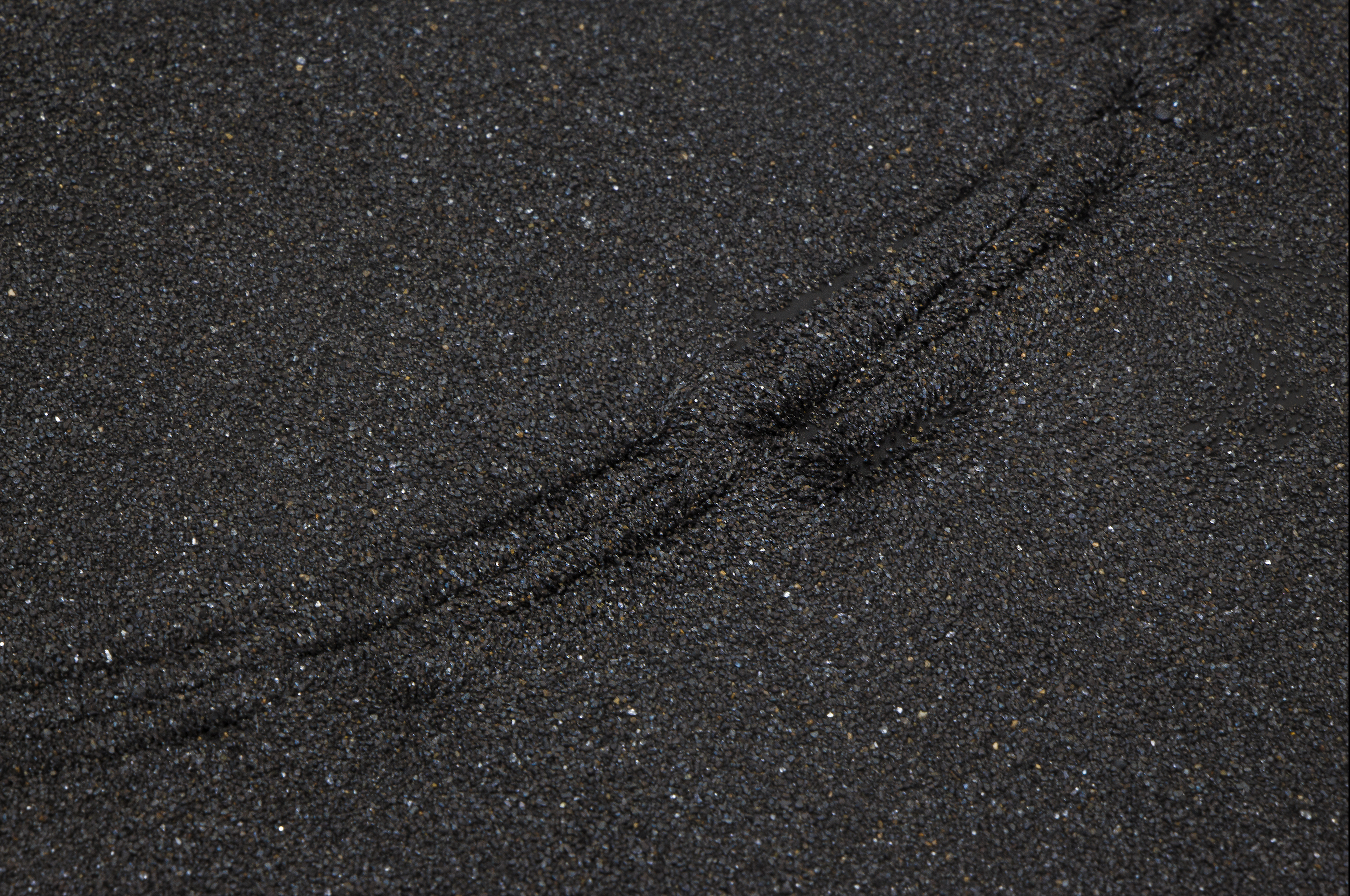
Face To Face
iPhone6
I take the bus every day to go to the studio, and I like to sit in the last row of the bus in order to observe what happens on the bus. The seats in the back of the bus are placed opposite each other, and those sitting opposite me caught my attention. Sometimes they would stare intently at their phones, and sometimes they would also gaze across the me, but eventually would turn to look out the window. We would never speak or even smile at each other, yet we could feel each other’s energy and I would record their various positions and movements on the bus. Photography was thus a way to record the space and people I encountered everyday during this thirty minute trip.
